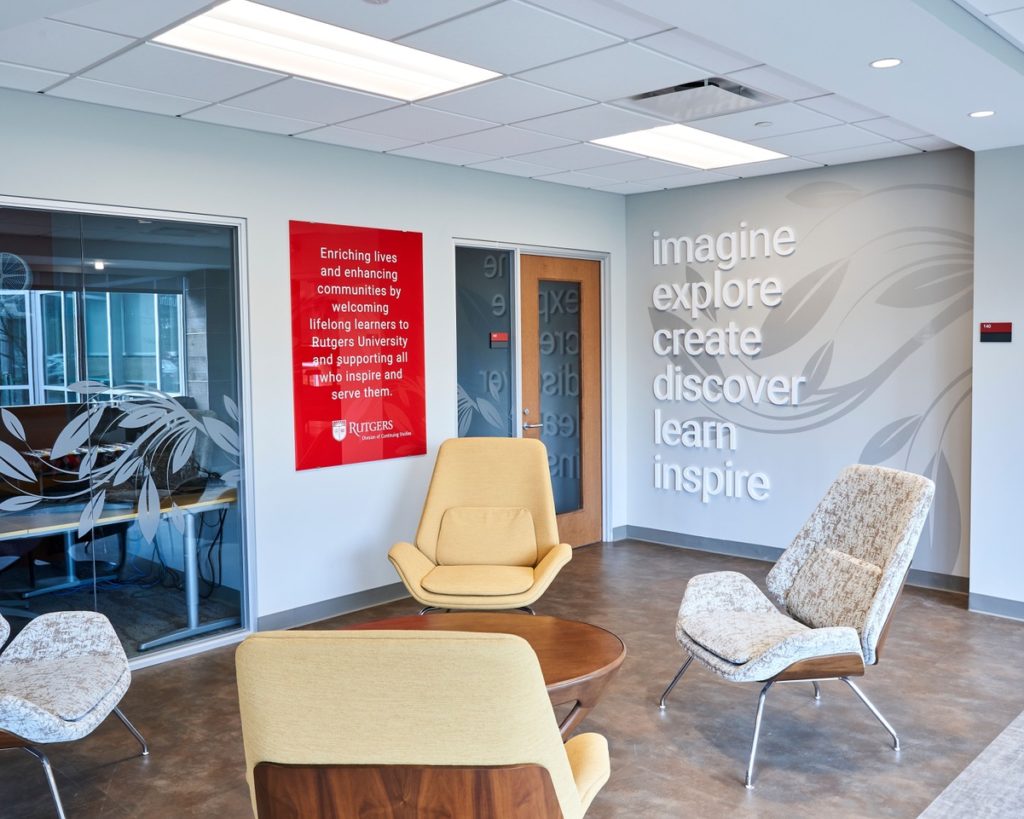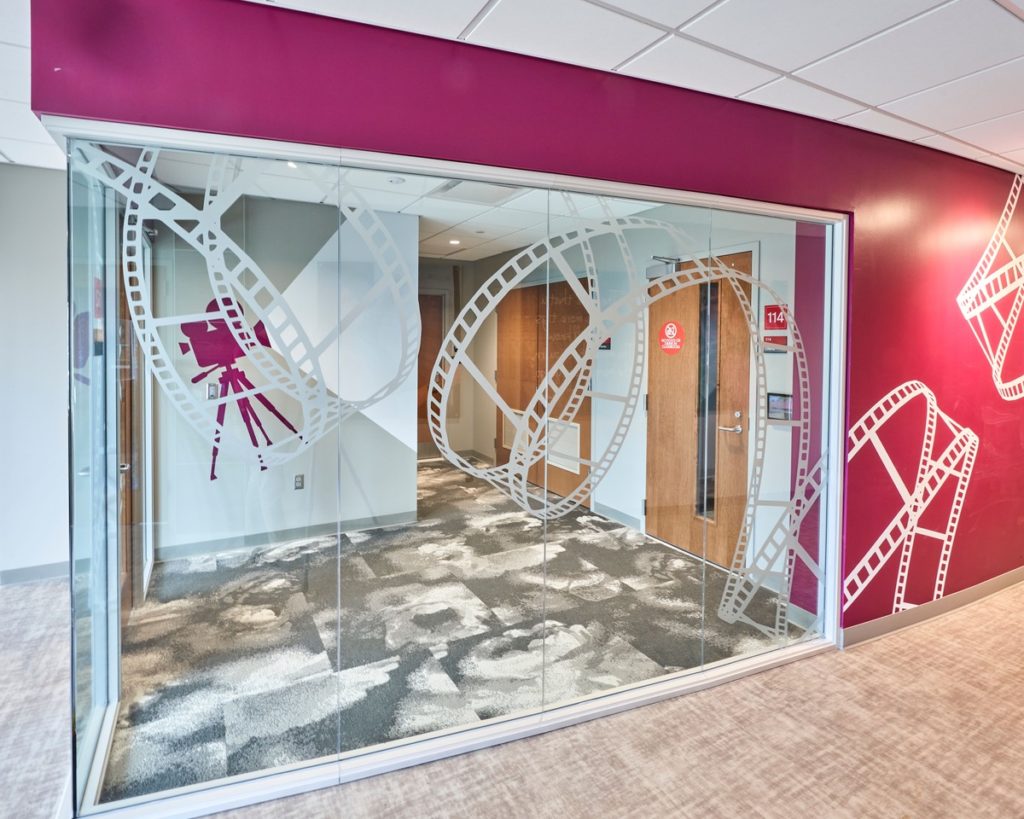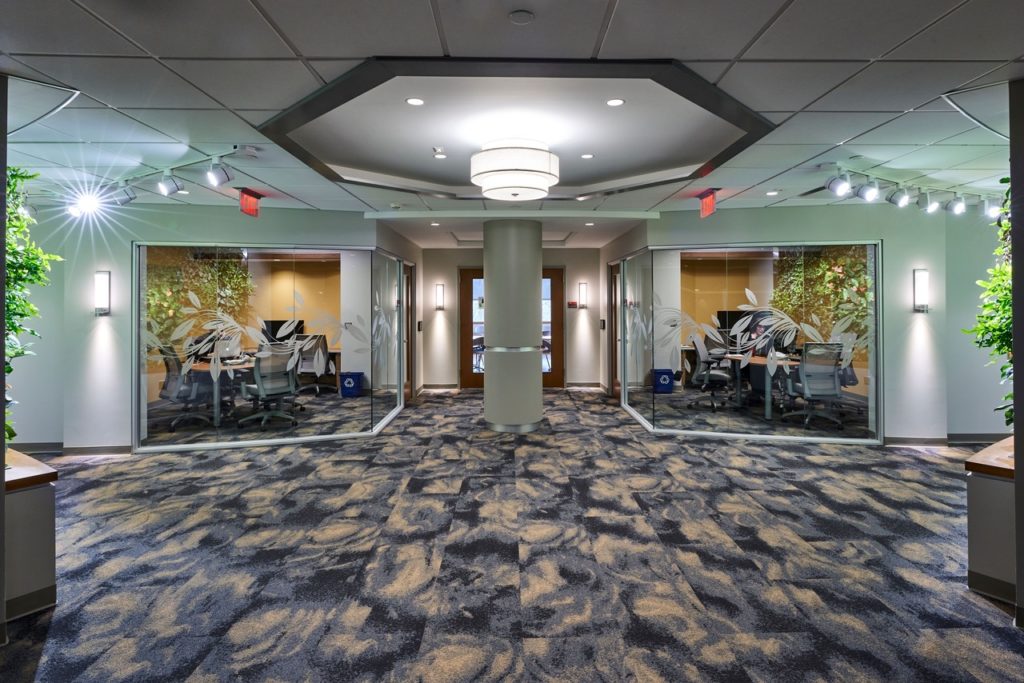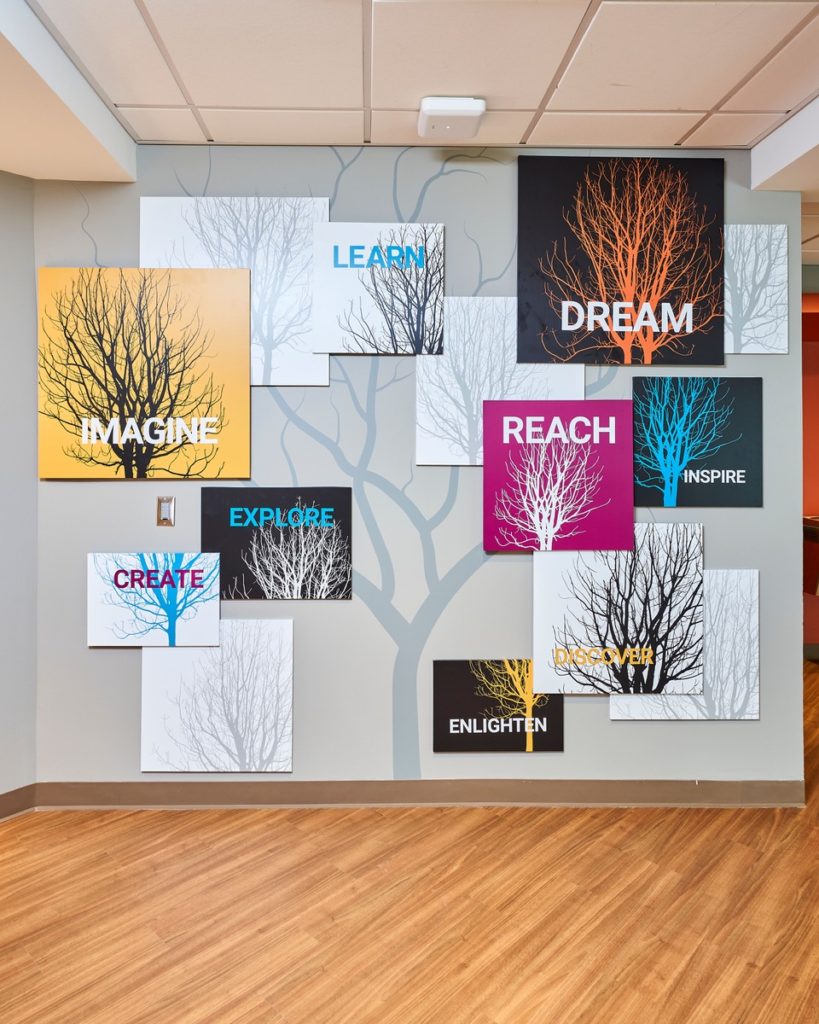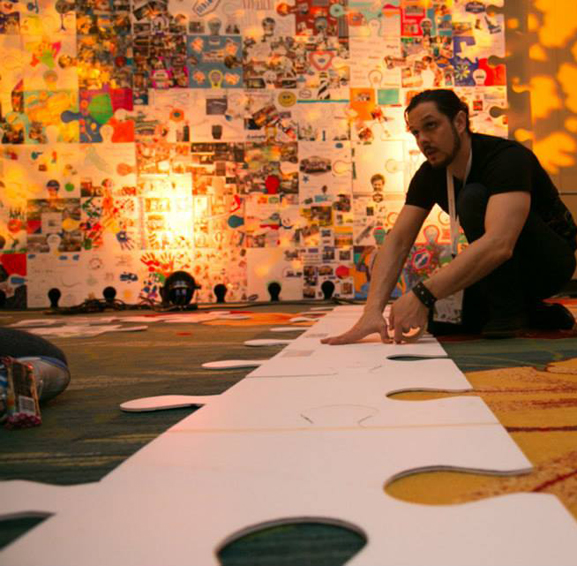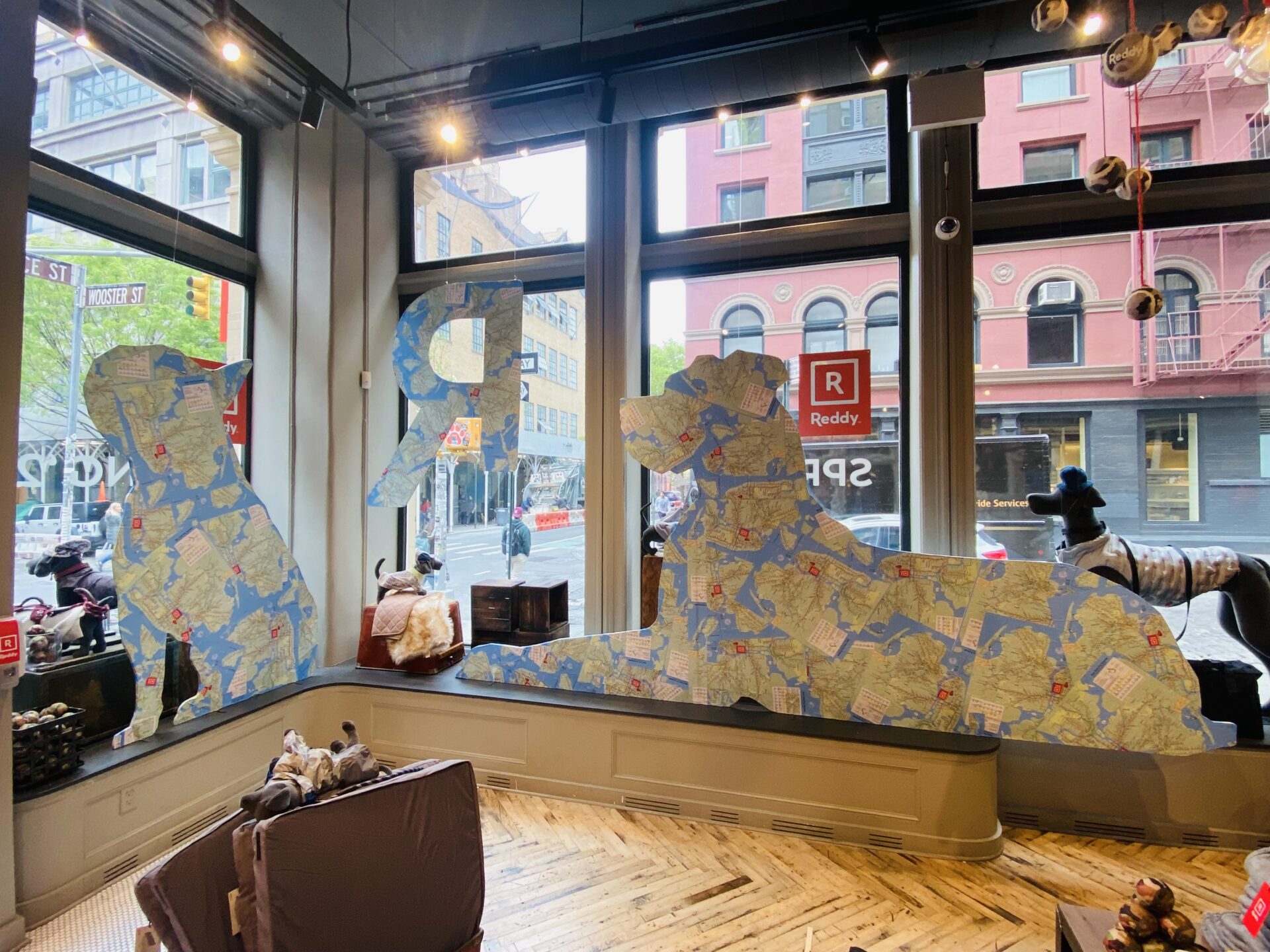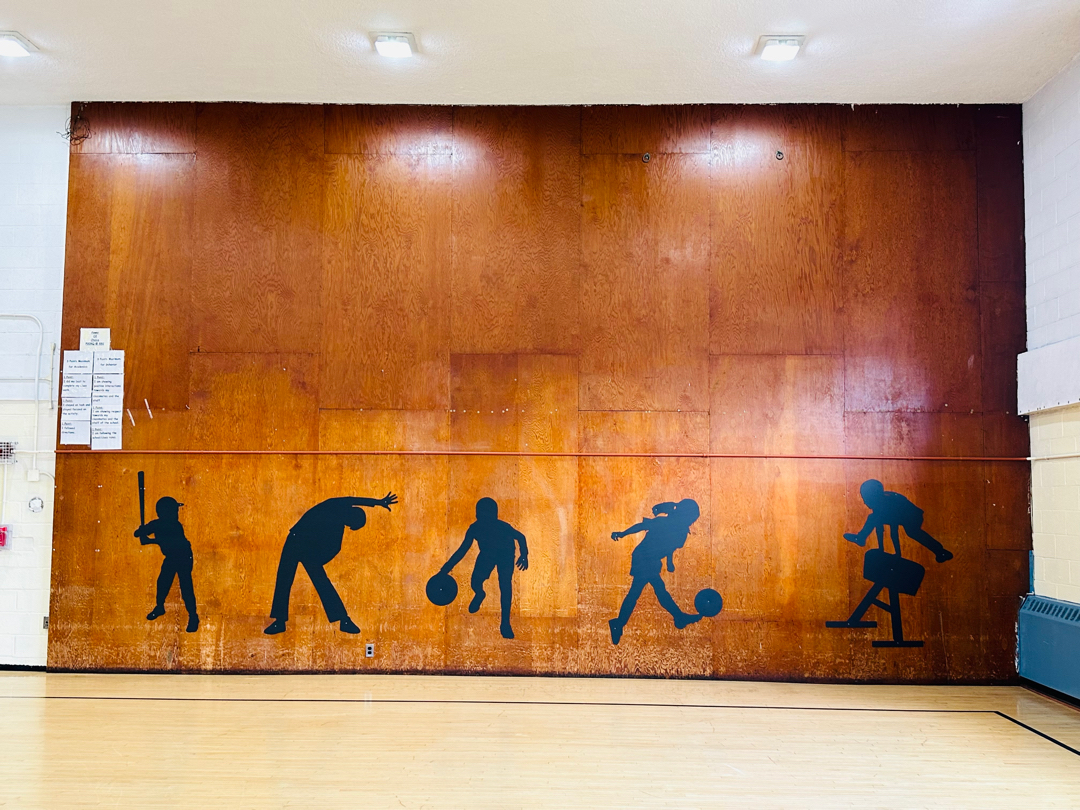Reimagining the Rutgers University Lifelong Learning Center
January 24, 2022
Opportunity comes to those who are hungry to learn.
At Bullseye NYC, our team is committed to doing whatever it takes to keep learning and giving our clients the best work possible. We work around the clock and across the country to make progress on 15 to 20 projects every day.
Reopening an Abandoned Building as a Learning Center
Rutgers University-New Brunswick purchased an old, three-story abandoned building on the perimeter of their campus property.
This building was gutted from top to bottom to be reopened as a center for continuing education. The university brought in a designer to craft a vision for the new learning hub that involved a distinct brand and unique artistic flair.
From modern art pieces to individual color palettes for different spaces, the new building was designed to stand out.
Biophilic Design at the Osher Lifelong Learning Institute
Rutgers came to Bullseye NYC for assistance with the creative direction and execution of the project. Our team worked on production and installation, collaborating with the designer for as long as three months to come up with a design concept.
Working with university clients is a more creative and hands-on process. Unlike corporate branding which tends to be more technical, university projects involve more abstract elements of creativity and design.
This was especially present with Rutgers as the design team landed on a concept known as biophilia. In ancient Greek, the term translates to ‘the love of living things’ (bio = life; philia = the love of). We wanted to incorporate nature as an integral component of the building’s interior design experience.
This was actually the most difficult part of the project. Using biophilic design meant that the Bullseye NYC team could not use non-biodegradable materials. Rather, things like reclaimed wood had to be used to produce, manufacture, and install structure into the building.
As a result of this limiting parameter, materials had to be carefully considered for all the branding and decorating pieces.
What is biophilic design?
The definition of biophilic design is:
“A concept used within the building industry to increase occupant connectivity to the natural environment through the use of direct nature, indirect nature, and space and place conditions.”
This concept connects us to direct and indirect experiences of nature through elements such as light, air, water, and more. With the Rutgers project, our team combined natural materials like wood and images of nature.
Biophilic design is common in interior design, particularly in spaces such as universities, healthcare facilities, and modern residential buildings. This approach is not just motivated by increasing our interactions with nature. Biophilic design also comes with very specific benefits to building visitors and occupants.
According to the National Resources Defense Council, biophilic interiors can:
- Reduce employee or student absenteeism
- Improve overall health
- Improve mood
- Improve productivity
- Increase employee or student engagement
- Reduce stress levels
- Reduce fatigue
- Restore mental feelings of wellbeing
Ultimately, Bullseye NYC connected the Rutgers indoor space to nature through artful installations. Each floor had a different theme: birch tree patterns, vines, greenery. There is even a wall made entirely from real plants with a system in place to water them regularly. From the walls to the glass to the staircases, nature-inspired detailing creates an earthy mood.
Pushing the Boundaries of Creativity
But the Rutgers team wanted to push boundaries further.
Impressed by Bullseye NYC’s creative direction, the university gave us a full, blank wall and a challenge: create something amazing. The wall had a bit of an indent, or drop shadow, and this unique impurity gave us the opportunity to create dimension.
With full reign on a wall, we turned to our environment for inspiration.
Each year, graduates from Rutgers College march in a procession through the Queen’s Gate gateway onto the Voorhees Mall for commencement ceremonies. Elizabeth Reeves, Assistant Facilities Planner, noted that “The gateway is one of the most frequently photographed structures at Rutgers.”

This symbol of success was the perfect muse for a lifelong learning center. Even though the space was contemporary, the gate was redesigned in a modern art form.
Recreating the Queen’s Gate with Graphics and Carved Material
Our team recreated the Queen’s Gate as an art exhibition on the wall for students to pass by on their journey to continued success.
We used printed graphics to create the background of trees and buildings. Then, with a biodegradable PVC product known as Sintra, we constructed a replica of the gate.
Using half-an-inch spacers behind the structure, we created the illusion of the gate floating off the wall.
In this process, we wanted to stay as close to the real Queen’s Gate as possible. To do this, we added the original medallion design from the gate, made out of PVC and painted bronze. Our team carefully carved the material to give the medallion dimension, imitating the one on the Queen’s Gate.
To add more detail to the wall, the Bullseye NYC team recreated a nearby lantern using acrylic for a realistic glass effect.
This building, now known as the Osher Lifelong Learning Institute, is all about rooms and spaces that connect us to nature and to each other. It inspires us, boosts productivity, and unleashes greatness.
Looking for a Graphic Installation Company for Your Next Project?
Transforming a space with art takes visionaries and skilled professionals. When you partner with Bullseye NYC, we’ll work with you to make sure your vision comes to life exactly as you see it.
Work with us to design something unique for your space today.
